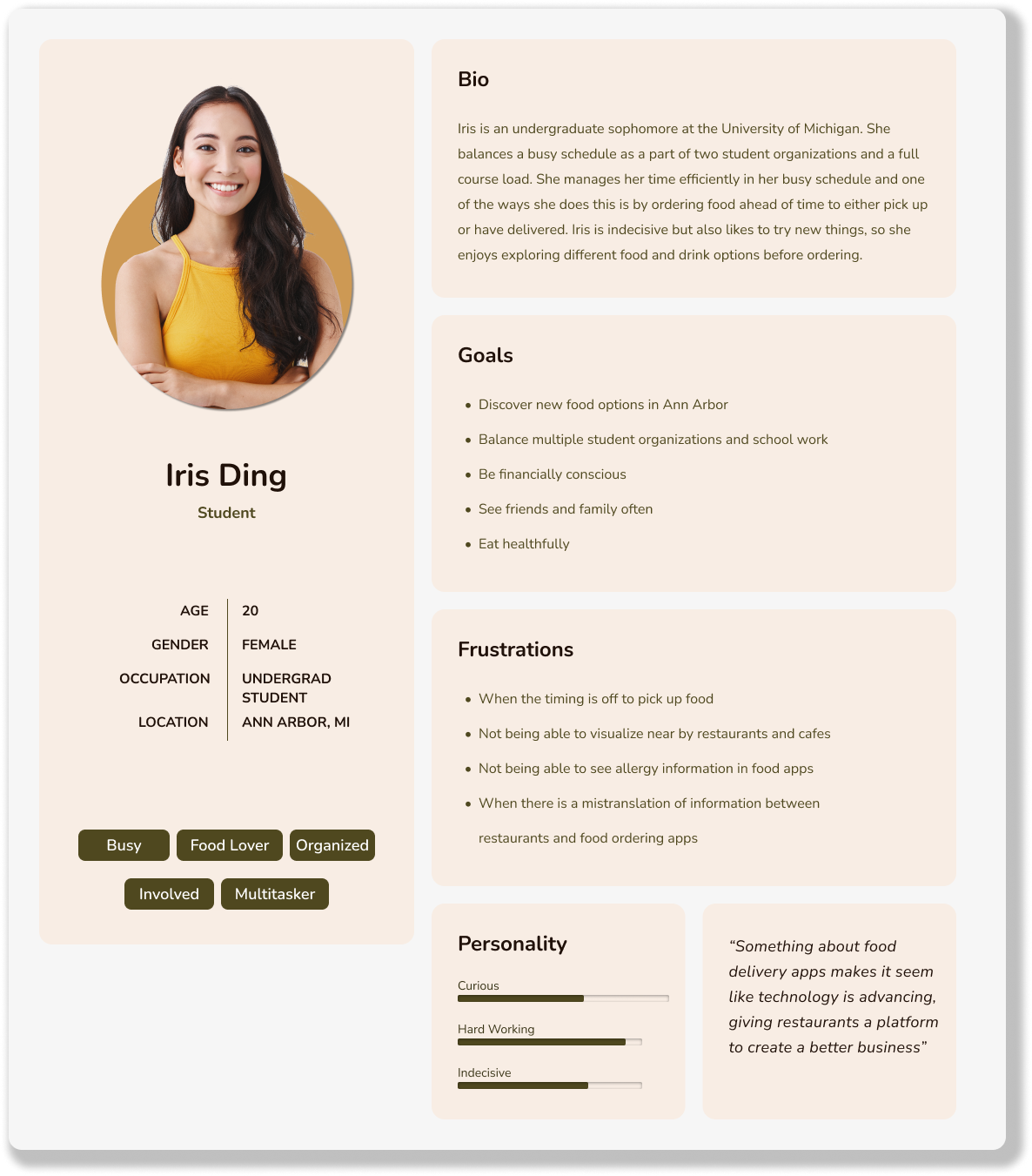Food Ordering | User Research
Objective
To learn about the college student lifestyle and their experiences and associations with food ordering apps, relating to organization, feelings on the college experience, self-care management, values of relationships, and the role that food ordering apps play in their everyday life as a college student relating to positive and negative experiences. As well as to draw insights through discovery-based research to develop a feature on food apps that allows for food and drink exploration when the user is unsure of what they want to order or if the user knows exactly what they want to order.Context
User research project for the course SI 422: Usability Needs and Evaluation at the University of MichiganTimeline
February 2024 - April 2024 (9 weeks)Task Analysis
Persona
Role
Lead UX ResearcherMethods
User experience research, Interviews, User Collage Activity, Thematic Analysis & Coding, Affinity Diagramming, Persona, and Task AnalysisResearch Processes
I focused on college students aged 18–22 from diverse backgrounds who frequently use food-ordering apps, screening participants for regular technology use and app familiarity.I conducted five interviews, asking about routines, time management, and experiences with food-ordering apps. Participants also completed a collage activity to explore their emotions and experiences as students, using images to prompt natural discussions.
After the interviews, I coded the data into themes such as Relationships, College Feelings, Time Management, Technology, Food, Finances, and Self-Care, with subcategories for detail. I organized these insights using an affinity diagram.
Affinity Diagrams
Insights
Aggregating my research into a persona and task analysis allowed me to see the full scope of my research. From these deliverables, I have gained insight into my main user group of college students.The persona culminates the central themes between the five user interviews. This shows that the average college student is a multitasker who is heavily involved in student organizations, finds that food-ordering apps help them manage time, and is financially conscious.The task analysis describes the steps of what a user would go through if they want to order something and know exactly what they are looking for, or vaguely know that they want a type of cuisine, temperature, breakfast, etc. The more specific the prompt the user types in, the fewer options they are presented with. The more open-ended the prompt, the more options the user is presented with, to help them narrow down their choices. This task analysis displays the actions of each step in this process, ranging from specific items to more vague inputs.Reflection
A limitation of this research is the lack of consideration for participants' dietary restrictions. This oversight may have excluded valuable perspectives on how food-ordering apps address the needs of individuals with specific dietary requirements. Exploring the experiences of users with dietary restrictions could reveal unique frustrations and challenges, offering insights to better tailor my prompt-based feature to their needs. To address this, future research will include interviews with individuals who have diverse dietary restrictions.






